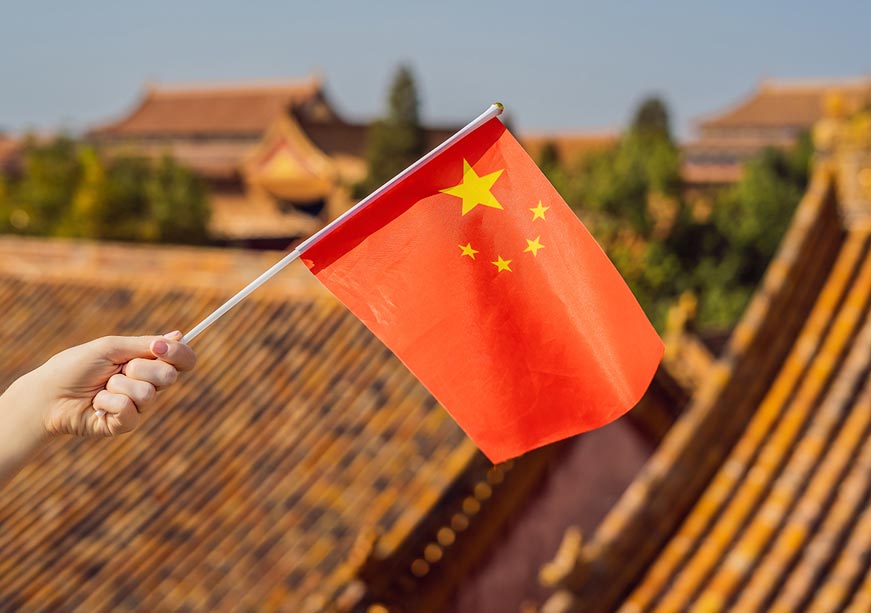
As technology further integrates the digital realm into the real world, digital twin technology has emerged as an indispensable tool, shaping industries and revolutionising operations. Initially conceived in manufacturing, these digital doppelgängers for physical realities in the virtual space now permeate diverse sectors, from healthcare to urban planning, driving efficiency, innovation, and sustainability. Besides national governments, intergovernmental organisations like the United Nations (UN) could play a key role to raise awareness about the use of digital twins and their potential contribution to the digital economy. Platforms like the World Telecommunication and Information Society Day could help operationalise these awareness building efforts. In India, the fusion of digital twins with innovation is evident in both private enterprises and government initiatives. Given the early stage of development, it is crucial for regulators to closely track the rapid advancements in technology. With regulatory progress and collaboration among key stakeholders, digital twins hold great promise for growth.
What is a digital twin?
A digital twin is a virtual representation of a physical object or system. It is not just a static model but a dynamic one that mimics the behaviour of its real-world counterpart in real-time or near-real-time. This replica is connected to its physical counterpart through sensors, Internet of Things (IoT) devices, and other data sources, enabling data exchange between the two. The term “digital twin” was first introduced by Dr Michael Grieves at the University of Michigan in 2002. Initially conceptualised in the manufacturing sector, the idea has since evolved to encompass a wide range of applications. By simulating various scenarios and analysing data, digital twins enable predictive maintenance, optimisation of operations, and innovation in product development. Digital twins are used in various industries such as manufacturing, healthcare, transportation, and urban planning, to monitor, analyse, and optimise the performance of physical assets and processes. They can simulate different scenarios, predict outcomes, and provide insights for decision-making.
By simulating various scenarios and analysing data, digital twins enable predictive maintenance, optimisation of operations, and innovation in product development.
A digital twin is different from a simulation. A simulation is a broader concept that involves creating a model of a system or process to study its behaviour under different conditions or scenarios. While a digital twin is typically focused on replicating a specific physical object or system and its real-time behaviour, simulations can be more general and may not always be directly connected to a physical counterpart. While both digital twins and simulations involve creating virtual representations of real-world phenomena, digital twins are more specific, dynamic, and often directly connected to physical assets, whereas simulations can be more general and may not necessarily have a one-to-one correspondence with physical objects or systems.
Digital twins in the metaverse
The metaverse, a virtual space where users interact with digital environments and each other, intersects with digital twinning in several ways. As the metaverse evolves, digital twins could serve as the backbone for creating immersive and interconnected virtual worlds. Firstly, digital twins can empower users to create highly detailed and accurate representations of themselves within the metaverse, enabling lifelike avatars and personalised virtual experiences. For example, in virtual shopping experiences, digital twins of products can provide accurate representations for users to interact with before making purchasing decisions. Furthermore, digital twins facilitate interoperability between different platforms and systems within the metaverse, allowing seamless communication and interaction across diverse virtual environments. This interoperability promotes the creation of interconnected experiences and fosters collaboration and innovation on a global scale. Digital twins could significantly expand the metaverse by enhancing its depth, richness, and functionality across various domains. Additionally, digital twins can extend beyond individual representations to encompass entire ecosystems, such as smart cities, industrial plants, or natural environments. By integrating real-time data and simulations, these digital twins enable dynamic and responsive virtual worlds that closely mirror their physical counterparts.
Digital twins can empower users to create highly detailed and accurate representations of themselves within the metaverse, enabling lifelike avatars and personalised virtual experiences.
Industries and applications
Digital twins have emerged as a transformative technology with myriad applications across industries, revolutionising the way organisations operate. They offer a versatile and powerful platform for modelling, monitoring, and optimising complex systems and processes. By bridging the physical and digital worlds, they empower organisations to make data-driven decisions, drive innovation, and achieve greater efficiency, resilience, and sustainability in their operations.
- Manufacturing: By creating virtual replicas of physical equipment, production lines, and entire factories, digital twins provide real-time insights into the performance, health, and efficiency of machinery and processes. Manufacturers can leverage the information to identify potential issues proactively, optimise production schedules, and minimise downtime, thus enhancing productivity and reducing operational costs.
- Product lifecycle management: Engineers can create virtual prototypes of products and simulate their behaviour under various conditions, allowing for iterative design improvements and validation before physical prototypes are built. This accelerates the product development cycle and enables manufacturers to deliver higher-quality products that better meet customer requirements.
- Healthcare: By creating virtual replicas of individual patients based on their medical data, clinicians can personalise treatment plans, simulate different interventions, and predict outcomes with greater accuracy. This approach, known as “patient-specific modelling,” is particularly valuable in complex medical procedures such as surgery or treatment planning for chronic diseases. They also enable remote monitoring of patients, allowing healthcare providers to track vital signs, medication adherence, and overall health status in real time, leading to proactive intervention and improved patient outcomes.
- Transportation sector: Digital twins are driving innovation in areas such as smart mobility, logistics, and fleet management. By creating digital replicas of vehicles, transportation networks, and infrastructure, stakeholders can optimise routes, improve fuel efficiency, and enhance overall system performance. For example, in the automotive industry, digital twins are used to simulate vehicle behaviour, test advanced driver assistance systems, and develop autonomous driving technologies. Similarly, in the aviation sector, they enable airlines to optimise aircraft operations, predict maintenance needs, and enhance passenger experience through personalised services.
- Urban planning: Creating virtual replicas of cities and urban infrastructure helps city planners simulate the impact of new developments, infrastructure projects, and policy changes on traffic flow, energy consumption, air quality, and public services. Digital twins also support emergency response planning and disaster management by providing real-time situational awareness and enabling predictive modelling of natural disasters and other crises.
Digital twins in India
In the private sector, there are multiple startups working to incorporate digital twins in other sectors of the country. For example, Paninian develops digital twins for aerospace products, TwinGrid Labs creates industry-specific twins to improve cloud-computing and machine learning, and SwitchOn uses them to predict production outcomes, for example, automating inspections for the manufacturing sector. The Indian government has also recognised the potential of digital twin technology in driving economic growth and innovation. Initiatives such as the Sangam: Digital Twin aim to create digital twins of major cities by 2035. This is a cross-sector initiative that brings together experts from industries, academia, and startups to highlight the transformative role of emerging technologies. The telecom secretary emphasised the potential the Sangam initiative has in transforming India’s infrastructure. The Indian government signed a partnership with a private mapping company, Genesys International, to improve policy making, city planning, and disaster management. While this is a step in the right direction, the lack of a general framework for the full use of digital twins has untapped potential in sectors such as clean energy through a digital twin of the country’s electricity ecosystem.
The Indian government signed a partnership with a private mapping company, Genesys International, to improve policy making, city planning, and disaster management.
As digital twin technology continues to evolve, its impact will only grow more profound across industries. Governments could be more efficient in policymaking, proactive planning, and efficient resource management across sectors, ultimately leading to improved public services. Spaces to discuss new technologies, such as digital twins, will help cover digital gaps both internationally and domestically, and take a step further in achieving the UN’s Sustainable Development Goals. With regulatory advancements and collaborative efforts from key stakeholders, digital twins hold the promise of optimising numerous sectors. Without clear regulations or guidelines currently established, the path to encouraging this growth in a balanced way remains uncertain. Private sector-led technological advancements may generate innovative solutions for persistent global issues, mirroring the growth of past technological advancements. In such cases, the government's role becomes apparent: Ensuring the fair and equitable distribution of benefits derived from this technology.
Tanya Aggarwal is a Research Assistant at the Observer Research Foundation
The views expressed above belong to the author(s). ORF research and analyses now available on Telegram! Click here to access our curated content — blogs, longforms and interviews.




 PREV
PREV


